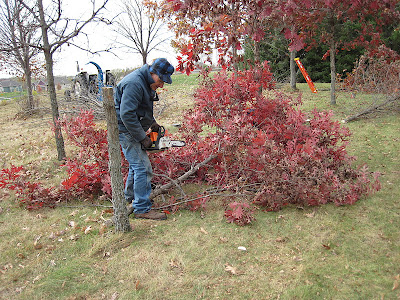As December 31st comes around, most of us do some looking back as we review the year, count our blessings, and consider ways to improve personally and professionally.
As you may know, my wife and I offer free Farm Heritage shows about my Collector series of Farm Heritage books to preschools, elementary schools, other schools, museums, libraries, historical societies, clubs and banquets of all types, nursing homes, senior centers and assisted living facilities. The shows are intended to be entertaining and educational for all ages of children and all ages of adults.
If you know of a place we should visit, give us a call.
My records show that in 2011 Nancy and I visited and performed for over 6,000 children and adults, visiting over 80 different facilities, including over 40 schools and nearly 40 museums, libraries, historical societies, senior care facilities, and other facilities.
Since we were on vacation for 10 days in January and 16 days in September, and since we were at the fair for 7 days and at Farmfest for 4 days, you can see the schedule was pretty steady, especially if you factor out holidays and other days we vended at other sites.
But our goal is to do more shows in 2012.
Can you help us? if you know of a place we should visit, give them a call and recommend that they call us. My stories aim to entertain and educate, and I enjoy making people of all ages smile.
We also published two new books,
If I Were a Farmer: Tommy's Adventure and
A Farm Country Picnic, which brings our book total to seven titles. You can view sample pages and order on line at www.gordonfredrickson.com or just email me at twogfsc@integra.net.
First, we are thankful to be so busy. We thank all of those teachers and principals in schools and all those activity directors and club leaders for taking a chance on us by letting us try to entertain and educate your group. I know it's a risk to invite an unknown to your school or group. I hope we didn't disappoint.
If we succeeded, please pass the word. Please invite us back. We can only continue if leaders continue to invite us to perform at their facility.
Second, our goal is to entertain and teach about farm heritage in a way that provides fun stories that are accurate according to what farming was really like for kids in 1950. It is my goal to write 16 titles of the Farm Country Tales series that cover the whole year of January through December of 1950 so that in 100 years or more there will be an entire body of work that displays what it was like on a farm in 1950.
I write my stories to preserve our farm heritage and as response to two things in our society:
(1) many children's books make farming look like a petting zoo. It wasn't then and it isn't now. I try to show things that farmers really do in my stories, like chores, haying, threshing, feeding calves, and milking cows.
(2) popular media either seems to get stories about farming wrong or ignore stories about farm people entirely, as if no stories can take place in a farm setting.
Third, since traveling and producing books are expensive endeavors, our goal is also to sell books. If we don't sell books, we cannot continue to do free shows, and I think free shows are essential because many groups have little or no money available.
At this point I wish to point out the many, many schools and other facilities who stretch their budgets to give us a travel donation for our efforts. Regardless of the size of the donation, we greatly appreciate it. Recently, teachers in a school actually donated their own money to us for travel expenses (thank you, Amy). I was moved by their generosity during Christmas Season when money for every family is at a premium. Also, lots of schools purchase a complete set of my books for their libraries. The books are a perfect and unique addition to any library collection, in both rural and metropolitan libraries.
In 2012, Nancy and I are working on
A Farm Country Harvest, which will be longer than the other books and include illustrations of my story and real photographs of harvest in the middle of the last century. It should be done in 2013.
We plan on publishing a fun book called
What I Saw on the Farm Caused Me Great Alarm, which is not a series title. The story is illustrated by twelve-year-old Bradley Simon, who goes to New Prague School.
And I hope to progress on my teen novel,
Garden Ghost, which takes place on the Carlson farm in February, 1955, when Jimmy is 14, Maggie is 13, and Joey is 10. The story is based on an event when my sisters and I saw a ghost in our garden when I was about 9.
Thanks to all who invited me to visit a facility in 2011.
Thanks to all who managed to give a donation for expenses,
Thanks to all who purchased my books. I know you appreciate that they are keepsake books, meant to be passed on from generation to generation to preserve farm heritage. I hope you enjoy them often.
Thanks to blog readers everywhere.
Happy New Year!


















